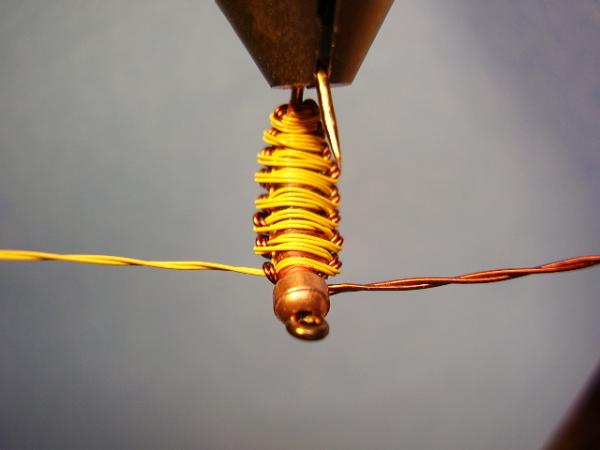Archives of Loren Williams Fly Tying Tutorials.
Woven Polish Nymph
Fly and Photos by Loren Williams
I am approached very often by folks asking me "how to weave" fishing flies. I can relate. Not long ago, even after decades of fly-tying, woven flies amazed me.
In the summer of 2005, upon my selection as Fly Fishing Team USA's fly tier, I was speaking with Jay Buchner candidly about my inability to weave, feeling that woven nymphs would be important in the World Championships that year in Swedish Lapland. Jay calmed my fears telling me that he could weave and would be able to show me, and that he could help tie those flies if they became important. He also kept mentioning his friend Vladi from Poland who may also be able to help.
It turns out that Jay was holding back a tad about Vladi. Vladi was the Vladi Trzebunia from Poland- 1989 Gold medallist and member of the Polish team that took the fly fishing world by storm when they introduced the Polish nymph (i.e. "heavy nymph ") and astounded the competition that year. This is the technique that has been tweaked and renamed "Czech Nymphing." These days Vladi has retired from competitive fishing and just happens to be a Team USA coach-and I got to spend 17 days in his company! The fishing technique may have been tweaked, but the flies remain Polish, and Vladi is central to them.
One night during pre-competition practice week, Vladi asked me away from my vise in the meeting room and invited me to his room where his Regal lay in wait. I was about to be mentored by the same kind man who taught Jay Buchner and Oliver Edwards about "his" flies and how to fish them. Can you say "lump in throat?"
Understand that weaving will not come overnight. It has taken me two full years of daily practice to get to the point I am at, and I am still years behind the Trezbunias, Buchners, and Edwards' of the world. Once you realize the technique, you will still need to master the tension, material selection and material amount. This will take time, trial and error. Be patient and practice hard! For what it's worth, I have found that embroidery flosses (using 2 or 3 of the usual 6 strands), fine antron, Uni-Stretch and Uni-Yarn to be my favorite weaving materials. Each gives a different appearance.
MATERIALS
Hook: Partridge GRS12ST Emerger
Bead: Copper Tungsten
Weight: Lead Wire
Underbody: Size "A" Nylon
Thread: Green Olive
Dorsal Weave: Green Olive Uni Yarn
Ventral Weave: Pale Yellow Uni Yarn
Rib: Monofilament Thread
Legs: Black Hackle Fibers
Collar: Black Rabbit with Fox Squirrel Guard Hairs
Click photos to enlarge!
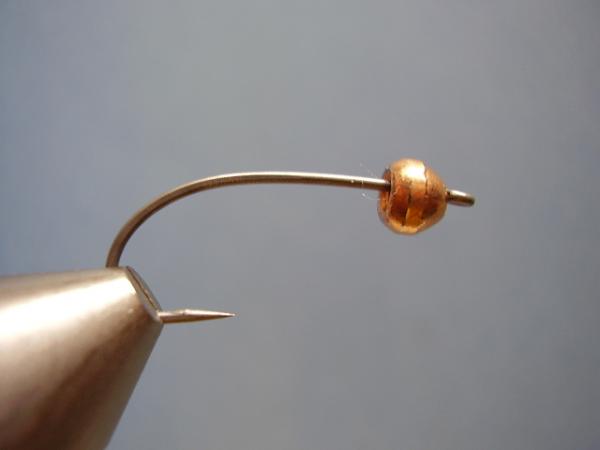
Slip an appropriately sized bead onto the barbless hook and place the hook in your vise.

Wrap a base of lead wire on 2/3 of the hook shank, shifted slightly to the rear as shown. This will be the base of the final "form."
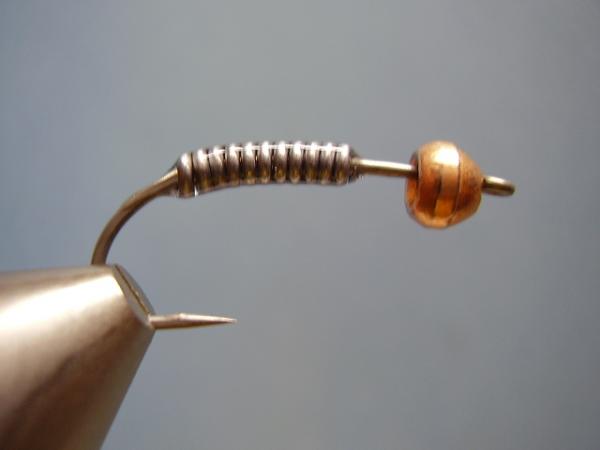
Coat the lead wire with cement or super glue to secure it to the hook and (more importantly) to fill in the gaps.
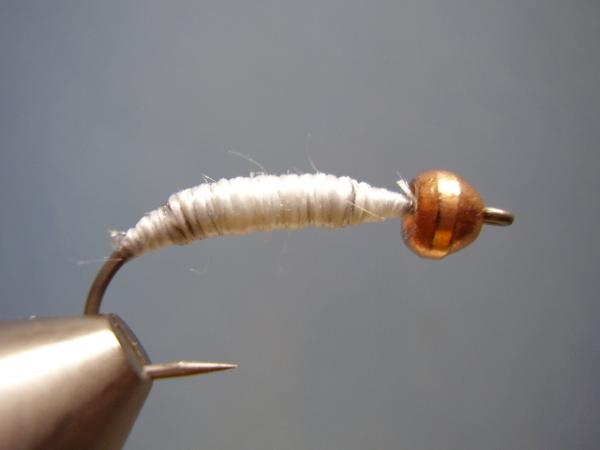
Build the form using size "A" flat thread. It is important to use FLAT thread or floss as opposed to heavy round thread like UNI or Gudebrod rod winding thread in order to make a smooth body. Be sure to taper-off the ends of the lead wraps. Also, be sure NOT to close in the gap between the bead and the lead is it will be used later.
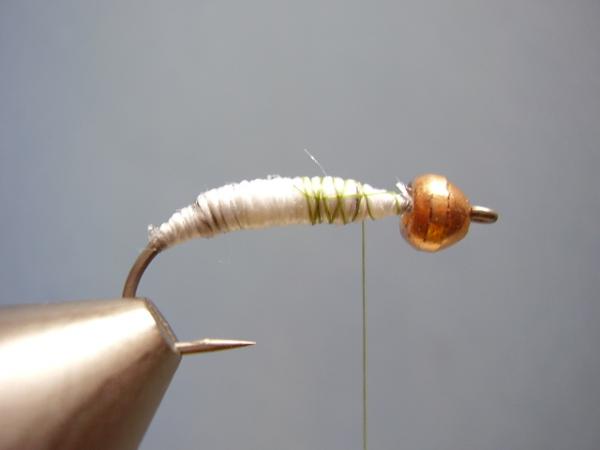
Whip finish the heavy thread, clip it, and attach the tying thread.
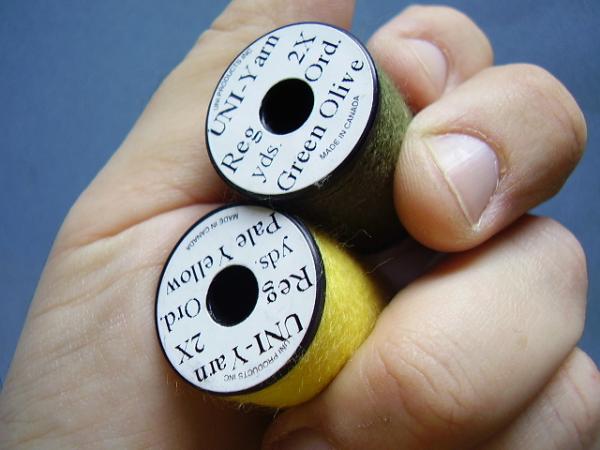
Select the weave material. Here, I am using Uni-Yarn in green olive and pale yellow. You may choose any color you desire, just be sure the tying thread matches them.
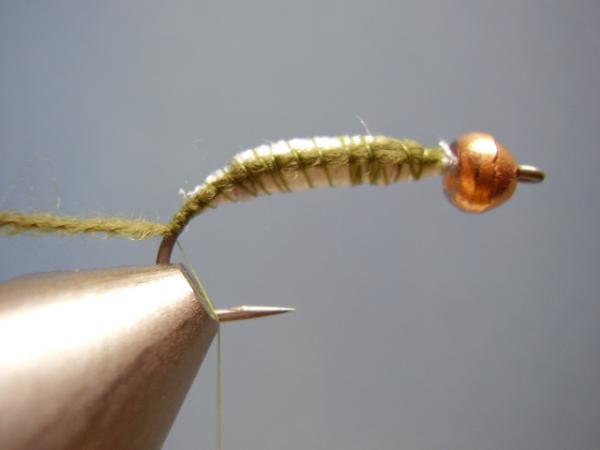
Secure the dark (dorsal) color to the nearside of the hook shank, from front to back. Secure it well down the bend.
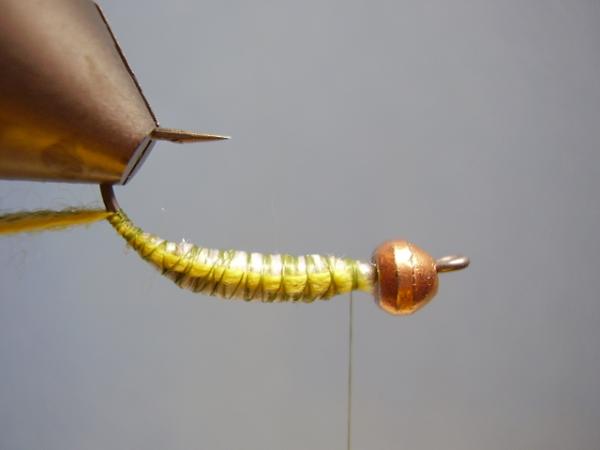
Repeat on the far side with the light (ventral) color, securing it, too, well past the bend.
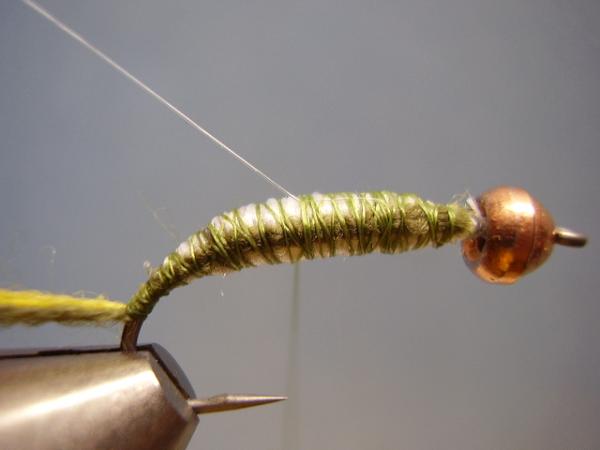
Attach the clear mono rib to the top of the hook and secure it to the rear.

Be sure all three materials are secured to exactly the same location. Then whip-finish and clip the thread.
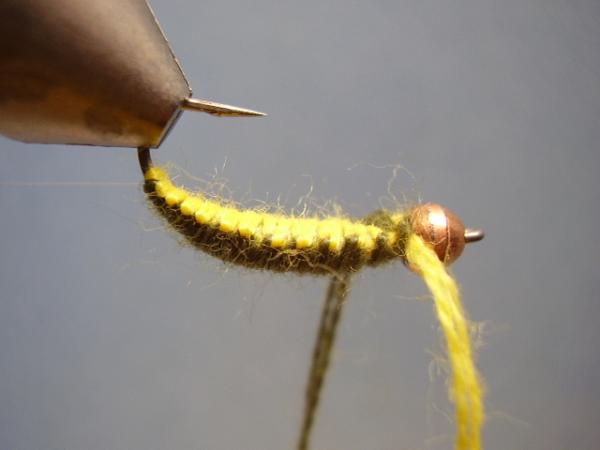
The yarn has been woven and knotted just behind the bead.
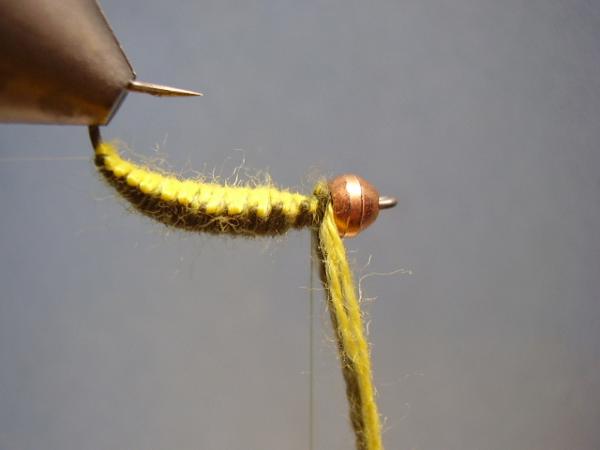
Attach the tying thread just behind the knot with as few wraps as possible.

Untie the knot.
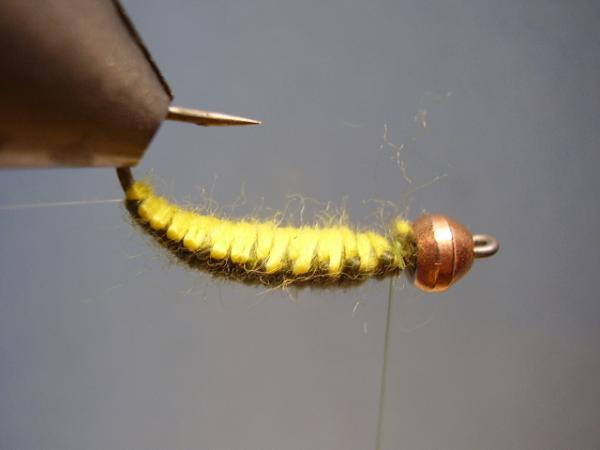
Trim close to the hook.
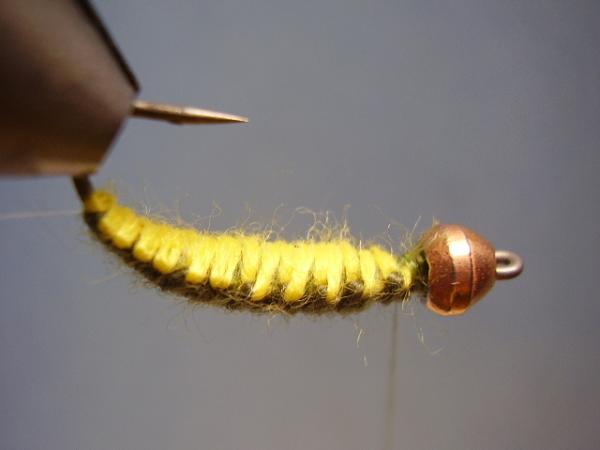
Secure it all with several tight thread wraps.
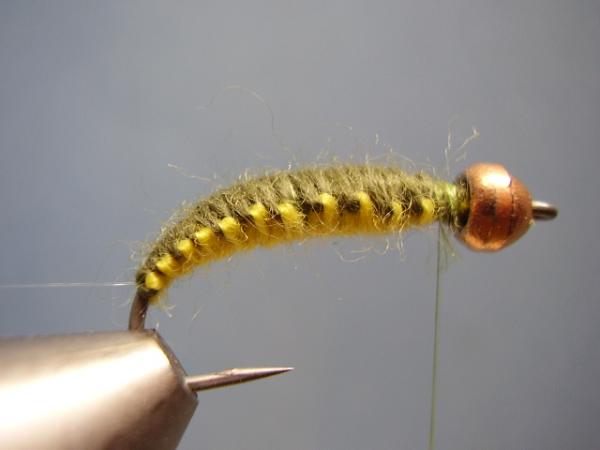
Turn the fly back over.

Counter rib (wrap in the opposite direction as you would wrap the tying thread) with the mono thread. The ribbing should go between each weave intersection.
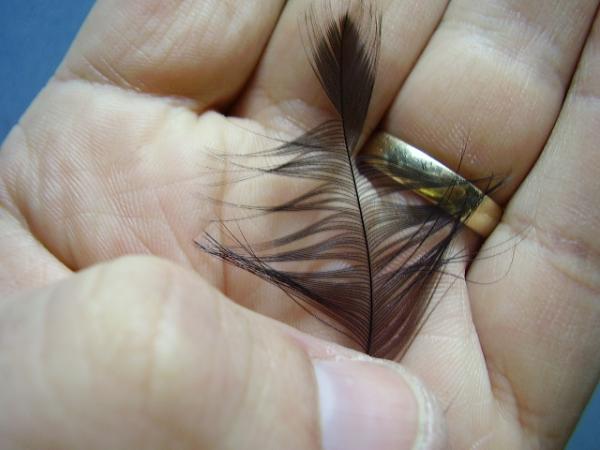
Select a large webby black hackle and stroke-out a bunch of fibers to be perpendicular to the stem.
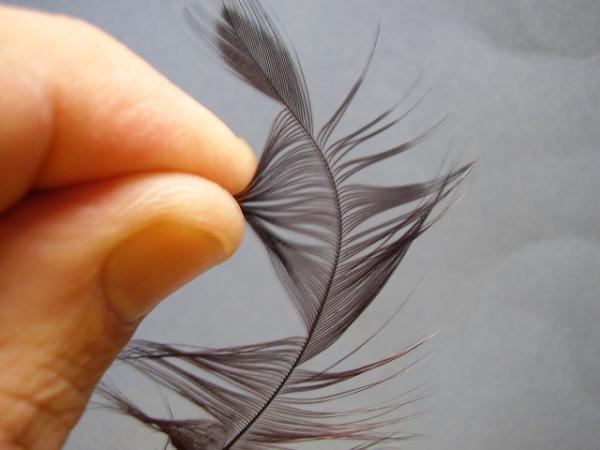
Grasp the very tips of the barbs with your fingers from top and bottom, NOT back to front.
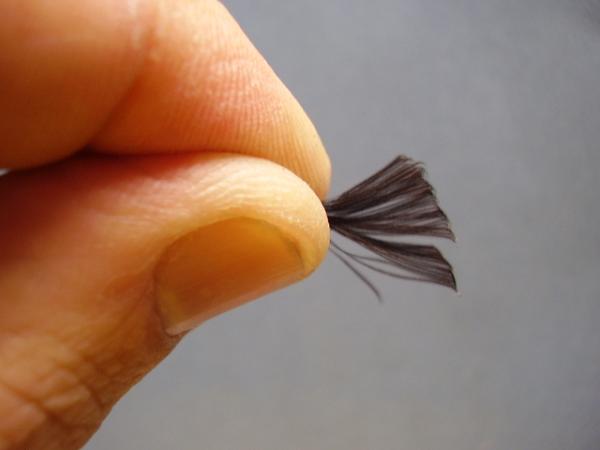
Grasp the tip of the feather with your bobbin hand and snap it quickly TOWARD your chest. This will leave you with an aligned bundle of hackle barbs. If you try to pull the tip to the side you will likely misalign the tips.
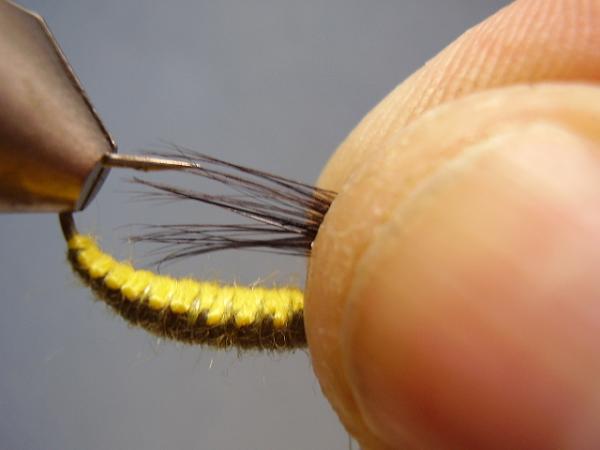
Invert the hook again and measure the legs to reach from the bead to the hook point.
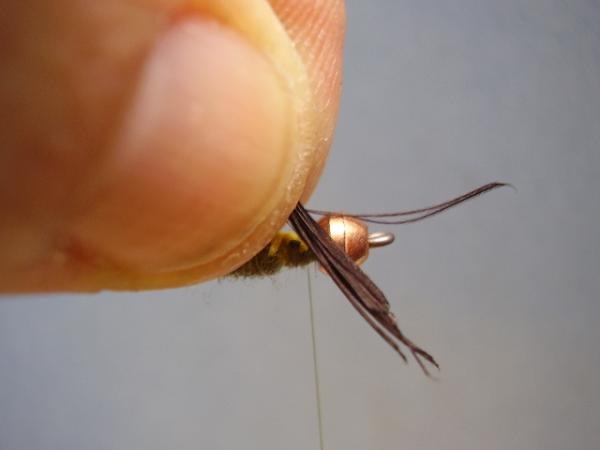
Secure the legs to the bottom of the hook just behind the bead. Use as few wraps as possible (2 to 3 is ideal).
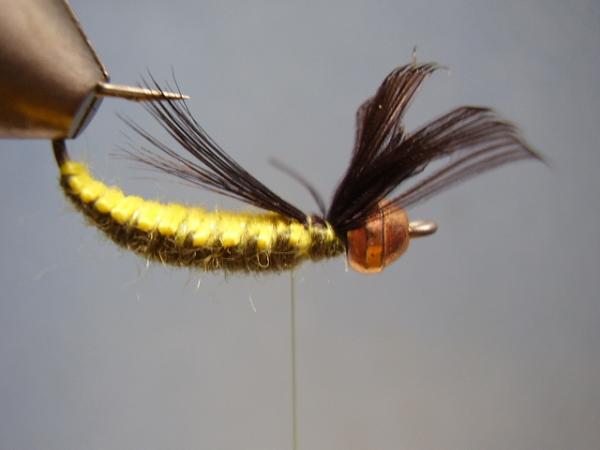
Legs secured.
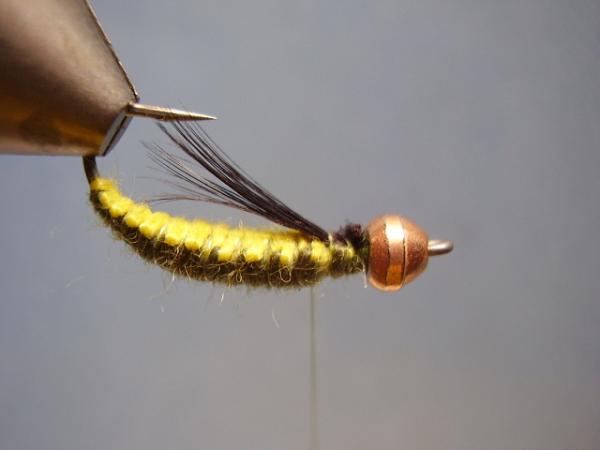
Adjust for length if needed, then clip the excess very close.
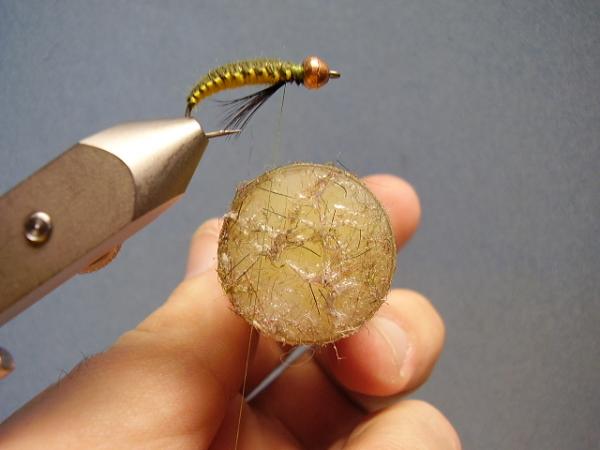
Turn the hook back to it's normal position and wax a short (2" to 3") section of your thread.
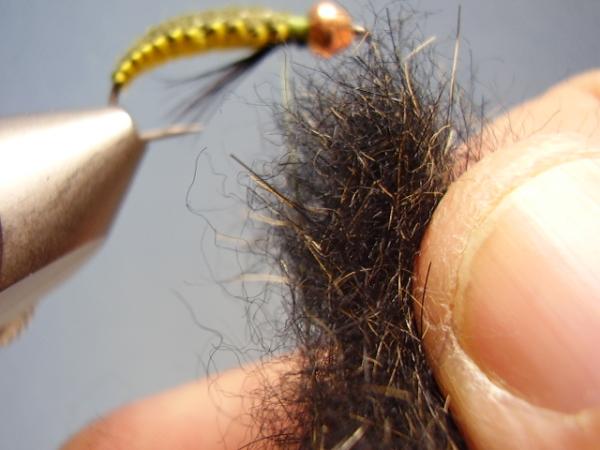
Select a healthy pinch of black, scruffy dubbing and touch it to the waxed portion of your thread. This is known as "touch dubbing."

This is what you'll be left with.
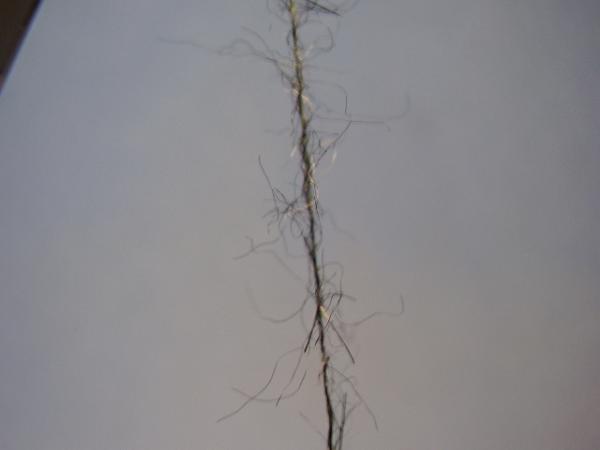
Aggressively spin your bobbin clockwise to lock and distribute the dubbing fibers along the thread forming a sort of mini-chenille.

Wrap the dubbing to cover the thread wraps, forming a fuzzy, yet small, collar.
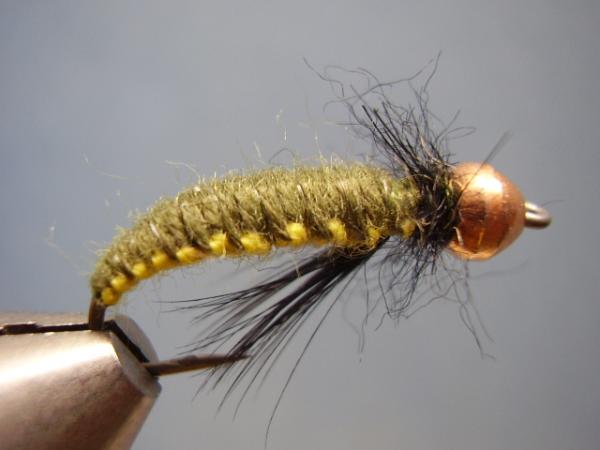
Without taking any more thread wraps, form a whip-finish and clip the thread.
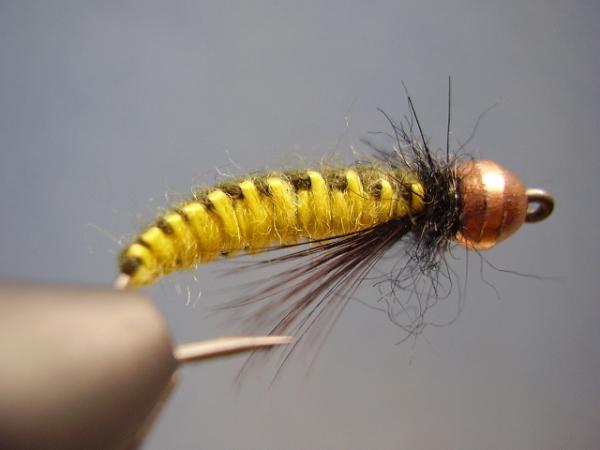
Bottom view.
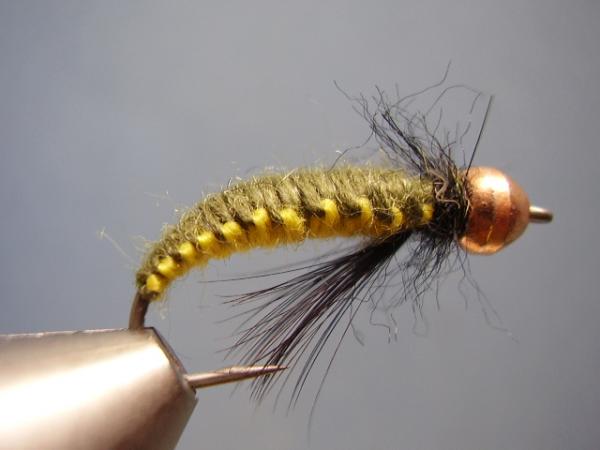
Side view.
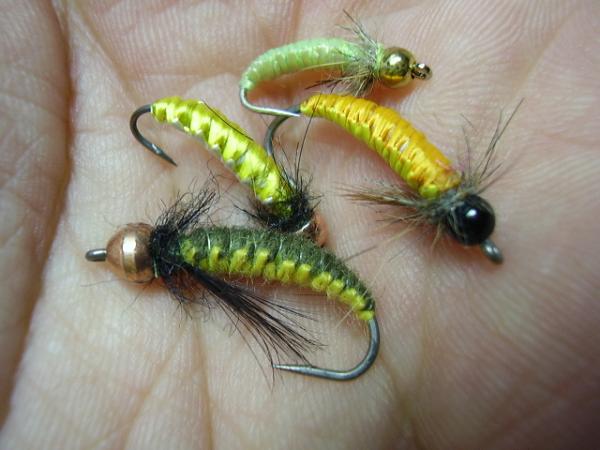
Some of the colors I use.
